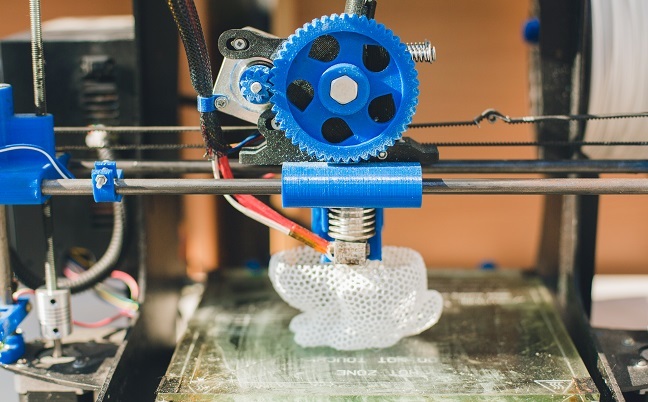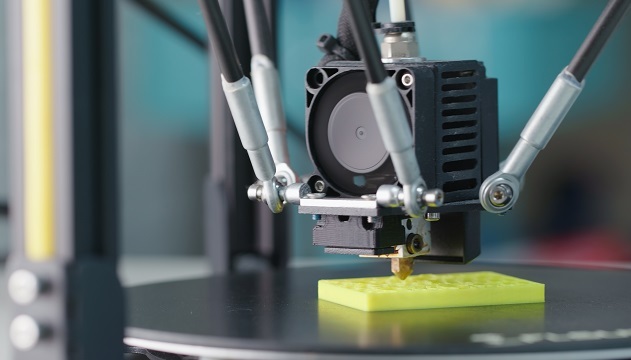
 Data Structure
Data Structure Networking
Networking RDBMS
RDBMS Operating System
Operating System Java
Java MS Excel
MS Excel iOS
iOS HTML
HTML CSS
CSS Android
Android Python
Python C Programming
C Programming C++
C++ C#
C# MongoDB
MongoDB MySQL
MySQL Javascript
Javascript PHP
PHP
- Selected Reading
- UPSC IAS Exams Notes
- Developer's Best Practices
- Questions and Answers
- Effective Resume Writing
- HR Interview Questions
- Computer Glossary
- Who is Who
What is the full form of DLP?
Introduction
Digital Light processing (DLP) technology was developed by Larry Hornbeck in 1987. Today, 3-D printing technology is rapidly emerging, running and operating on different technologies like metal powder and some use resigns.

The technologies which work on the light source are known as "Vat polymerisation". There are two types of vat polymerisation one is SLA i.e. "Stereolithography" and the other is DLP i.e.
Introduction to DLP
The full form of DLP is "Digital Light Processing". It is a 3-D printing technology. It uses an "arc lamp" as a light source for the projection of objects. It has a "Digital micromirror device" (DMD) which contains digital micromirrors. These mirrors redirect the visible light on a Screen to create 3-D images of objects.
How DLP Technology Works
DLP technology developed from image forecast technology. It contains a set of chips. The main functional unit of DLP is DMD (digital mirror device). The mirror projects the visible light on the photosensitive resin. The DLP printer contains a laser bank, a focussing lens phosphor wheel, a dichromatic filter, a mirror, a colour wheel, a TIR prism, projection lens.
It contains a vat pit that contains photopolymer resin.
The DLP method uses a video projector that contains a micro-mirror device which modifies light through a micro-optical electromechanical mirror array.
That light is projected to an imaging mirror placed at the bottom of the vat resin.
That mirror controls the path of the light and then projects it to the resin.
Then this visible ray passes to the colour wheel and through a projection lens, it creates a 3-D image of the object.
Application of DLP
The DLP technology is used for various purposes in the 3-D printing of object images.
The new technology-based DLP model is used in medical devices for the diagnosis and treatment of patients like in personalised implants, medical equipment, fabricating specific medical equipment, etc.
3-D printing technology helps in giving 3-D graphical information about patients' specific anatomical structures.
With the help of DLP technology various medical models of the heart, skull, blood vessels and tumours are created for teaching, demonstration, analysis and surgical purposes.
DLP printing is also used to print convoluted designs of jewellery, dental moulds toys, and models of fine designs.
DLP technology is also used in video projector that contains an array of mirror that build layers of modulating images.
It is also used in the bioprinting of biometric tissued for drug screening and disease patterns.
Advantages and Disadvantages of DLP
DLP technology is quite similar to SLA technology, it has both advantages and disadvantages.

Advantages
DLP technology can print convoluted designs of objects with high resolution.
DLP printers print high-resolution pictures with accuracy.
Vat polymerisation is a quite fast process, it can produce parts in ten minutes, as compared to other 3-D technologies.
It has DMD technology which contains millions of mirrors that produce a precise picture of the object.
DLP technology is faster than SLA technology, as it used an arch lamp with an LCD panel that spread on a vat polymer surface in a single move.
The use of vat resin in DLP facilitates the process and decreases wastage and cost.
It is also used in the bioprinting of biometric tissued for drug screening and disease patterns.
Advantages and Disadvantages of DLP
DLP technology is quite similar to SLA technology, it has both advantages and disadvantages.
Disadvantages
It produces a strong odour due to the melting of photopolymers which creates inconvenience to users.
In printing larger items there are chances of distortion due to the melting of photopolymers.
The DLP techniques are compatible with photo-polymerisation polymers like Ethylene glycol, gelatin methacrylate, poly acrylate and thiolated heparin, etc. These bio-inks are limited as compared to other 3-D printing technology. So this technology has limitations in biomedical printing.
Conclusion
Digital light processing (DLP) technology was initially started by Texas Instruments for projecting front and rear images. In this technology, millions of micro mirrors are used to produce high-resolution 3-D printing of objects. There is a colour wheel and the movement of mirrors projects grey and coloured shades to form video images. This technology is used in 3-D modelling software and printers to project images.
FAQs
Q1. What is the difference between DLP and SLA technology?
Ans: The DLP technology uses an arch lamp as a light source as compared to UV light in the SLA technique which is more conventional. In the DLP technique, the stationary light covers the entire resin at a time as compared to SLA in which the light beam passes from point to point.
Q2. Who first discovered the first model of 3-D printing using photopolymer technology?
Ans: In 1981, "Hideo Kodama of Nagoya Municipal Industrial Research" has first published about 3-D printing technology using photopolymer technology. Then Larry Hornbeck of Texas Instrument invented the "DLP technology in 1987".
Q3. What materials are used in DLP printers?
Ans: In DLP printers thermoplastic resins, metals, and UV-protected resins like Vero white resin, Vero clear resin, polyurethane, methacrylate etc. are used.

